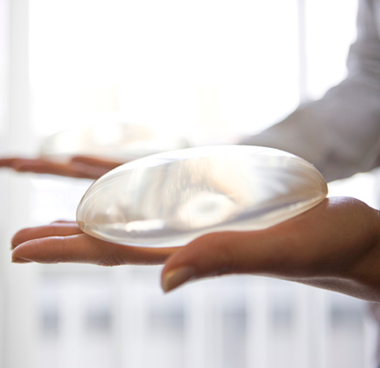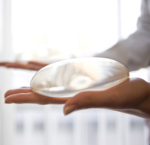A significant number of patients receiving biomedical implants, such as breast implants, pacemakers and orthopedic hardware, will experience a foreign body response, or FBR, in which the body encapsulates the implant in scar tissue, necessitating removal of the implant. The reaction is not well understood. However, researchers from the University of Arizona College of Medicine – Tucson may have found the key. In a recent study, published in Nature Biomedical Engineering, they identified a protein that appears to drive rejection of biomedical medical implants in humans, offering insights that could improve the design and safety of implants.
To understand why some immune systems build thick capsules around implants while others do not, the team gathered capsule samples from 20 patients whose breast implants were removed—10 whose reactions were severe and 10 whose reactions were mild. A protein called RAC2 was highly expressed in samples taken from patients with severe reactions.
“When we examined the severe fibrotic samples, RAC2 was one of the most important proteins we found,” said co-lead author Kellen Chen, PhD, assistant research professor of surgery. “Because it seemed to drive a lot of downstream pathways, we decided to explore a little more closely.”
They found that mechanical stress caused by the implants leads immune cells to activate RAC2 and other proteins, which then summon additional immune cells, including types that can combine to attack a large invader. “The FBR begins as a wound-healing response to the local tissue damage that occurs during surgical implantation of a device. However, continually elevated levels of extrinsic mechanical forces create a high-mechanical-stress environment surrounding the implant that leads to a sustained inflammatory response,” they wrote.
The response is heightened based on the size of the implant recipient, which explains why these responses were not seen in animal models.
“The cells touch this new material similar to if I touch something soft versus something hard,’ said Chen. “My body can tell that a table is harder than a pillow—touching the table activates mechanical pathways in my fingers. Similarly, as the cells interact with that implant and surrounding tissue, they activate due to the increased mechanical stress. The immune cells realize there is a foreign body there, and they react by building a fibrotic capsule that surrounds the implant in an attempt to shield it off.”
The more severe the immune reaction, the thicker the capsule. In some people, this capsule constricts around the implant, impeding its function and causing pain. Up to 30% of implants need to be removed due to FBR.
The team confirmed RAC2’s role in FBR by blocking the expression of RAC2 in animal models, which led to a significant reduction (up to three-fold) in the level of FBR.
RAC2 is specific to immune cells, which means that, theoretically, a drug blocking it might only target immune cells without affecting other cells in the body. The researchers posited that future biomedical implants could have a coating of the inhibitor, or patients could start systemic therapy following implantation to reduce the immune reaction.
Senior author Geoffrey Gurtner, MD, FACS, department chair of surgery, and Chen, who are also members of the UArizona Cancer Center, are already working with the Arizona Center for Drug Discovery at the R. Ken Coit College of Pharmacy to develop such a drug.
“Establishing a complete understanding of the molecular mechanisms driving the foreign body response presents the final frontier in developing truly bio-integrative medical devices,” said Gurtner. “We believe that local targeted therapy is better. Maybe there are ways to conjugate this drug onto an implant with some sort of coating to minimize systemic problems.”







